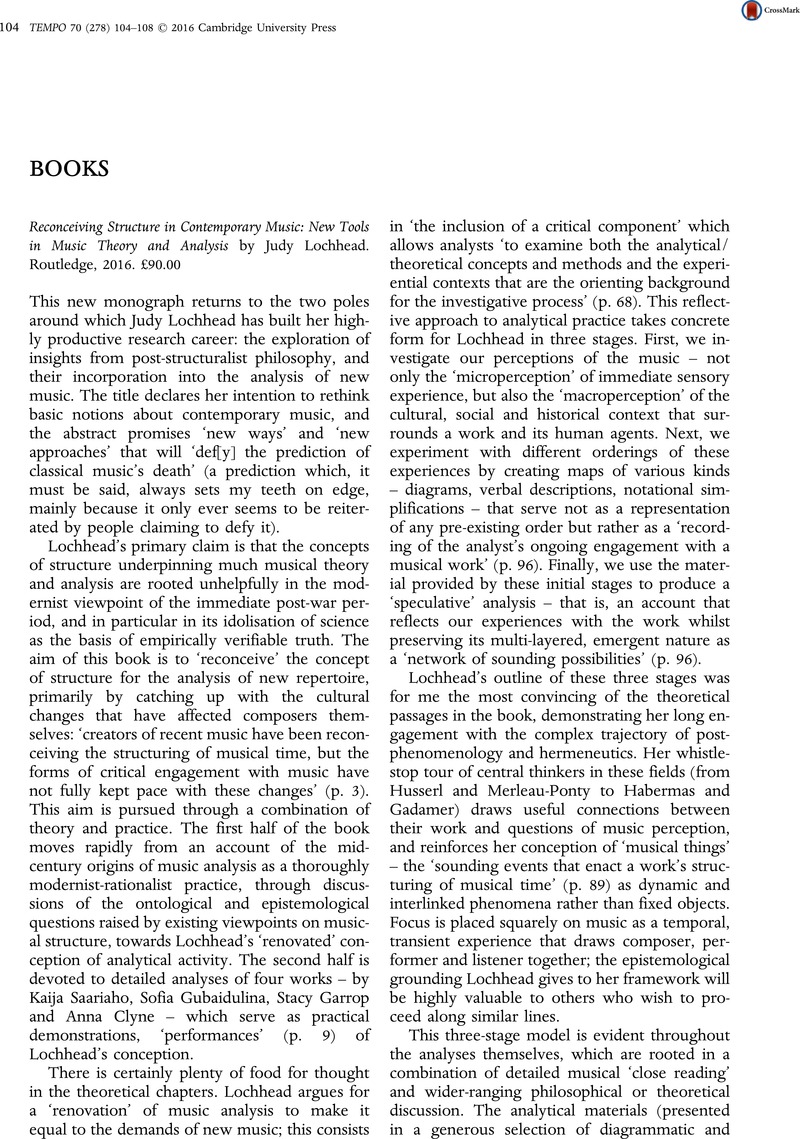No CrossRef data available.
Published online by Cambridge University Press: 28 September 2016

1 Iddon, Martin, ‘Darmstadt Schools: Darmstadt as Plural Phenomenon’. TEMPO 65:256 (2011), p. 2CrossRefGoogle Scholar.
2 In particular, Robert Fink's critique of the concept of surface and depth in Schenkerian theory and Robert Adlington's exploration of alternatives to motion-based metaphors of structure both deal explicitly with the challenges contemporary music poses to spatial metaphors of form, and suggest possible solutions. See Fink, Robert, ‘Going Flat: Post-Hierarchical Music Theory and the Musical Surface’, in Rethinking Music, ed. Cook, Nicholas and Everist, Mark (Oxford: Oxford University Press, 1999), pp. 102–37Google Scholar; and Adlington, Robert, ‘Moving Beyond Motion: Metaphors for Changing Sound’, Journal of the Royal Musical Association 128:2 (2003), pp. 297–318 CrossRefGoogle Scholar.
3 One excellent place to start is the work of Marion Guck, who as long ago as 1983 wrote of her concern that the desire for music theory ‘to emulate the kind and degree of rigor evident in theories of the physical sciences’ would end up ‘limiting music theory to those features of musical structure that lend themselves to quantification or formal-logical expression … creative thinkers need not apply’. See Kielian-Gilbert, Marianne and Guck, Marion, ‘Reflections on Music Theory’, Perspectives of New Music 22:1–2 (1983), pp. 581–2CrossRefGoogle Scholar.